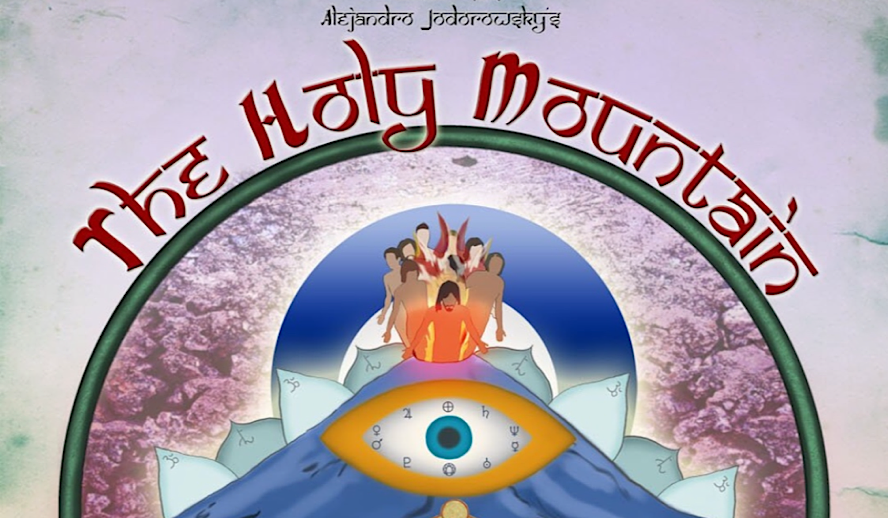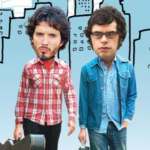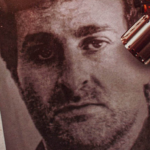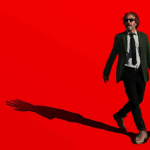Table of Contents

Photo: ‘The Holy Mountain’/ABKCO Films
Foreign-language cinema is reaching a new peak in the public consciousness. Films like Bong Joon-Ho’s “Parasite” and Lee Isaac Chung’s “Minari” have received considerable recognition from awards shows, and as a result, international directors, in general, are getting increased visibility and publicity for their often genre-defying work. Much of this has to do with the international cinema scene having more in the way of creative freedom for their directors, which has been consistent for decades.
Artists like Federico Fellini, Claire Denis, and Jean-Luc Godard became household names overseas before ever receiving attention from the mainstream Hollywood media, and some American filmmakers, like Stanley Kubrick and David Lynch, opted to intentionally travel to Europe to make films that wouldn’t be burdened by Hollywood expectations and requirements.
Related article: The Complete List of 2021 Oscar Nominations – Celebrations, Surprises & Snubs | The Show Must Go On
Related article: Oscar Buzz: ‘Minari’ is an Incredible Portrait of the Korean-American Experience
One of the greatest examples of postmodern, international filmmakers is Alejandro Jodorowsky, a Chilean-French director and visual artist, perhaps best known for almost making a “Dune” adaptation that would have featured Orson Welles and Mick Jagger. But before he ever attempted to make that film, Jodorowsky gained notoriety for his transgressive arthouse films, which caught the attention of Beatles members John Lennon and Paul McCartney.
1973’s “The Holy Mountain,” in particular, drew widespread acclaim and attention from counter-cultural activists and artists in the post-Vietnam landscape and became somewhat of an urban legend for just how provocative and offensive it was. But underneath the film’s intense exterior lies a movie with a lot more on its mind than just borderline-obscene imagery for the sake of it, and the messages within might have more to say about the 21st Century than even Jodorowsky could have realized.
‘The Holy Mountain’: The Core Narrative
For this deep-dive, I want to break the film down into two parts: both the literal events of the film as they play out on-screen, as well as the more implicit and obtuse subtextual aspects that may require some more digging.
Subscribe to Hollywood Insider’s YouTube Channel, by clicking here.
For the actual plot itself, the film keeps things relatively simple. At the beginning of the movie, a man resembling the Savior, Jesus Christ, appears in a Central American village, covered in flies and unable to move properly. He is assisted by a limbless dwarf, and the two head into the more urbanized city, where they entertain a group of parade attendees at a Carnaval-style event. The Christ-figure is shown engaging in numerous acts of debauchery, that would be contrary to the religious depictions of the man (including drinking and filming a couple have sex), as the parade moves through the town (put a pin in this). He re-enacts the various stages of the Crucifixion and is eventually captured, with wax figures created in his image. He then eats off the face of one of the figures and sends it skyward via a balloon.
Soon, he notices a crowd looking up to a tall tower, which he ascends. Upon ascending the tower, he encounters and fights a Devil-like character named The Alchemist (played by Jodorowsky himself), who captures him in a glass egg. The hero then defecates into a container, which is then transformed into gold by the Alchemist. The man smashes a mirror with the gold and is accepted as the Alchemist’s apprentice. It is at this point where the Alchemist introduces the 7 other characters that will accompany Jesus on his journey to the mystical Holy Mountain, who each represent different planets in the Solar System (with the exception of Mercury, and with Jesus representing Earth).
Related article: The Power of Positivity: Ikorodu Bois + Chris Hemsworth + Russo Brothers + Sam Hargrave
Limited Time Offer – FREE Subscription to Hollywood Insider
The Symbolism
This is just the basic set-up of the film (without delving much into the spoiler-filled final act), and already it is easy to see why the film was deeply controversial at the time of its release. Various rights and religious groups protested the film’s global screenings, which is really not all that surprising, considering the movie’s dense and shocking subject material. But upon digging a little deeper, the intentions behind the film’s grotesque imagery become a bit more clear.
The Christ-like character that we’ve seen throughout the film is partially an allegory for the Savior himself but is also a play on the Tarot card of The Fool, an archetype which has worked itself into other, similarly sacrilegious works, like the original “Wicker Man” film. Additionally, the limbless dwarf from early in the film is also a representation of a Tarot card, specifically the Five of Swords. This choice intentionally links the more traditional religious elements with those of the Pagan tradition, allowing for more parallels in the film’s subtext to be drawn.
When The Thief (as he is referred to in the film) arrives in the town, the viewer is mostly distracted by the shocking nature of the imagery, to the point where the implications can easily be lost. One of the central floats in the parade features a band of bearded dragon lizards dressed as Central and South American common folk, wearing bright, traditional clothing. Soon after they are introduced, a group of giant toads dressed as conquistadors is thrown onto the float, where they viciously attack and eat the lizards, until they all are torn apart in a fiery explosion.
Related article: Hollywood Insider’s CEO Pritan Ambroase: “The Importance of Venice Film Festival as the Protector of Cinema”
Related article: The Masters of Cinema Archives: Hollywood Insider Pays Tribute to ‘La Vie En Rose’, Exclusive Interview with Director Olivier Dahan
The link Jodorowsky is making is simple, but also easy to miss. The toads are the Spanish, who have pillaged and destroyed the land the lizards (aka the indigenous people of the land) have spent centuries developing. The scene is intensely violent and graphic, but at the core is the harsh truth of colonialism, in that, for too long, there has been a myth built around the intentions behind the colonization of the Americas, with the Spanish and other immigrants depicted as “saviors” to the people of the region, rather than the horrible, destructive force they actually were.
So with this in mind, the religious allegory begins to make more sense. The spread of Christianity was intrinsic to the Spanish conquering the region, and now through this film, Jodorowsky has effectively positioned “The Fool”–aka Jesus–as the Savior of the Americas, without the slightest consideration as to what the indigenous people have to say about it. There are those that blindly follow The Fool on his journey, most notably the prostitute he filmed at the parade and an ape, thinking that the man’s success is their only hope for a secure future.
This ties into the other imagery used in the film, as The Thief participates in increasingly heinous acts during the parade and his journey to the Tower, yet is still revered by the people. When Jesus finally does reach the Den of the Alchemist and participates in the defecation-to-gold ceremony, the Alchemist says to him, “You are excrement. You can change yourself into gold.” The subsequent journey to the Holy Mountain is, in essence, the Fool’s attempt to turn himself into “gold,” or rather, the enlightened savior he so desires to be.
Related article: A Tribute to Willem Dafoe: The Voice of an Actor
Related article: A Rare Historical Perspective Analysis of ‘Memories of Murder’: Bong Joon-Ho’s Film Based on True Story of Institutionalized Violence
The rulers of the other planets show examples of what can happen if the Fool fails, with each showing a different side to the horrors of modern humanity, if they are led by corrupt leaders (ie, graphic body augmentation, widespread weapons manufacturing, and a wicked police state). These rulers attempt to assist the Fool on his journey to enlightenment, but are quickly corrupted by drugs and sex, and abandon their mission.
The Finale and How it All Ties Together
As the Thief finally reaches the near-end of his journey and arrives at the foot of the Holy Mountain, the film gives us maybe the biggest twist in cinema history, which has been co-opted by a few other notable works, most famously “Monty Python and the Holy Grail.” Right before the Fool climbs the Mountain to achieve true enlightenment, the Alchemist appears before him and condemns the mission. He then breaks the fourth wall, revealing the cameras and lights set up around the set of the film, and says “Goodbye Holy Mountain, real-life awaits us.”
The film was confusing to audiences at the time of its release, but with the advent of more coverage of the various interpretations of the film through the internet, the messaging has become more clear. Jodorowsky, as The Alchemist, is showing us the folly of Savior-worship as a concept, as any powerful person can fall victim to corruption on their journey to enlightenment, even Jesus. The inherent concept of worshipping those above us clouds our judgment and creates a situation where we are blindly following the orders of others who do not have our collective interest at heart, turning our own horrific subjugation into a cultural celebration (like the parade).
Related article: 10 Best Martial Arts Movies: An Intro And In-Depth Look At The Genre
Related article: ‘Son Of The White Mare’: A Tribute To Ancient Mythology Focusing On Justice, Honor, Destruction, And Creation
With recent developments in the real-world (the corruption and racism of the previous US President, allegations of racism within the British Royal Family, the Me-Too movement exposing predatory behavior in entertainment and politics, etc.), the film’s societal commentary is more relevant than ever. We can try to achieve this “enlightened” perspective ourselves, but the act is meaningless within itself, as any great man or woman can easily fall victim to the horrific distractions on said journey, and fail as a result. So what is the point in engaging in such a tradition at all?
Real life goes on, and we should do what is good for us and our people, not help someone else achieve something greater out of hero worship, or seek that same goal out of personal arrogance. If you can get past the film’s graphic and intensely provocative imagery (of which there is plenty, most of which I can’t even describe in print out of fear of obscenity and/or censorship), there lies an incredibly profound message, that might even be helpful to your own personal development.
By Patrick Nash
Click here to read Hollywood Insider’s CEO Pritan Ambroase’s love letter to Black Lives Matter, in which he tackles more than just police reform, press freedom and more – click here.
An excerpt from the love letter: Hollywood Insider’s CEO/editor-in-chief Pritan Ambroase affirms, “Hollywood Insider fully supports the much-needed Black Lives Matter movement. We are actively, physically and digitally a part of this global movement. We will continue reporting on this major issue of police brutality and legal murders of Black people to hold the system accountable. We will continue reporting on this major issue with kindness and respect to all Black people, as each and every one of them are seen and heard. Just a reminder, that the Black Lives Matter movement is about more than just police brutality and extends into banking, housing, education, medical, infrastructure, etc. We have the space and time for all your stories. We believe in peaceful/non-violent protests and I would like to request the rest of media to focus on 95% of the protests that are peaceful and working effectively with positive changes happening daily. Media has a responsibility to better the world and Hollywood Insider will continue to do so.”
More Interesting Stories From Hollywood Insider
– Do you know the hidden messages in ‘Call Me By Your Name’? Find out behind the scenes facts in the full commentary and In-depth analysis of the cinematic masterpiece
– A Tribute To The Academy Awards: All Best Actor/Actress Speeches From The Beginning Of Oscars 1929-2019 | From Rami Malek, Leonardo DiCaprio To Marlon Brando & Beyond | From Olivia Colman, Meryl Streep To Bette Davis & Beyond
– Why Queen Elizabeth II Is One Of The Greatest Monarchs | Her Majesty Queen Elizabeth II of United Queendom of Great Britain & Northern Ireland
– Compilation: All James Bond 007 Opening Sequences From 1962 Sean Connery to Daniel Craig
– In the 32nd Year Of His Career, Keanu Reeves’ Face Continues To Reign After Launching Movies Earning Over $4.3 Billion In Total – “John Wick”, “Toy Story 4”, “Matrix”, And Many More
– Want GUARANTEED SUCCESS? Remove these ten words from your vocabulary| Transform your life INSTANTLY
the holy mountain, the holy mountain, the holy mountain, the holy mountain, the holy mountain, the holy mountain, the holy mountain, the holy mountain, the holy mountain, the holy mountain, the holy mountain, the holy mountain, the holy mountain, the holy mountain, the holy mountain, the holy mountain, the holy mountain, the holy mountain, the holy mountain, the holy mountain, the holy mountain









